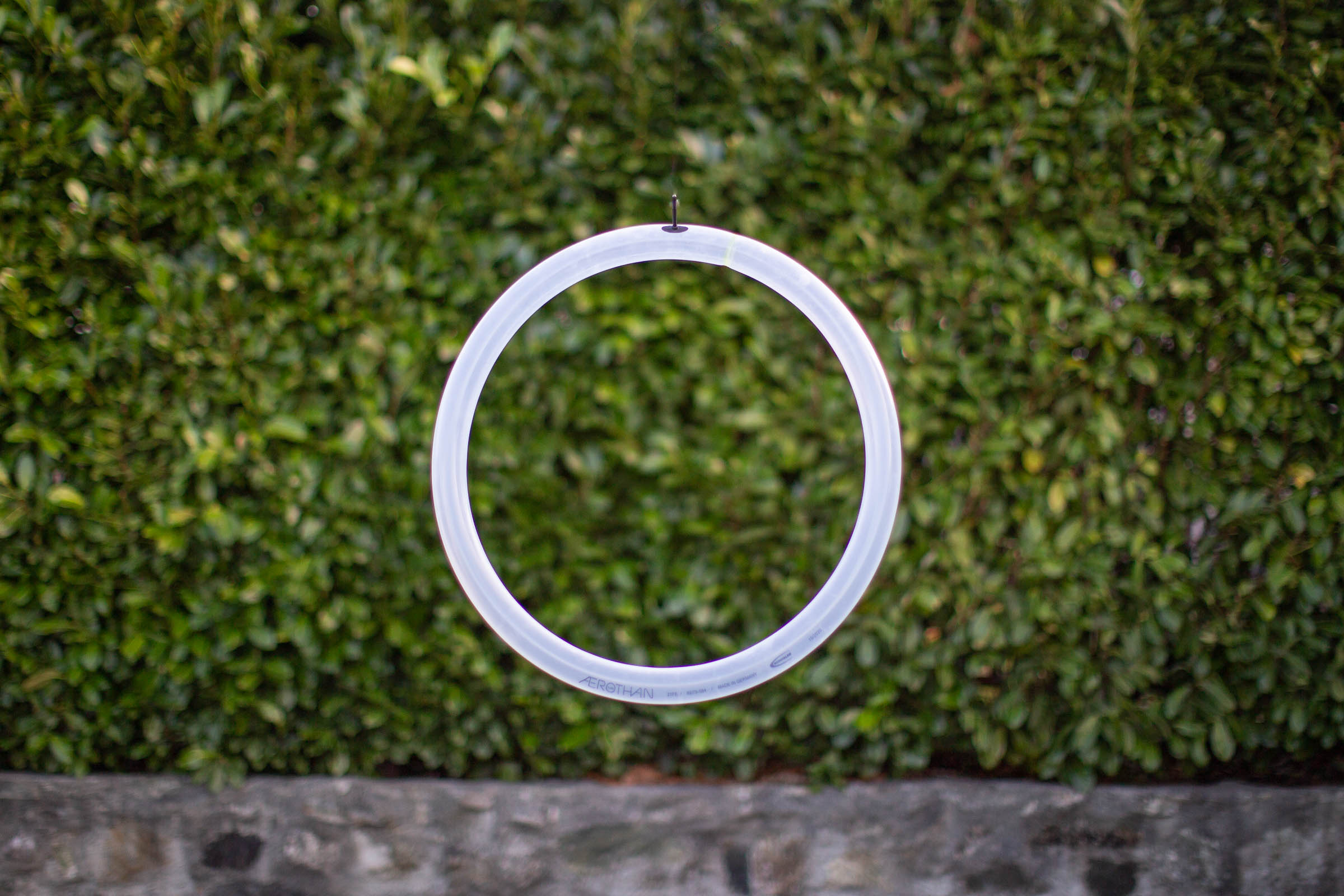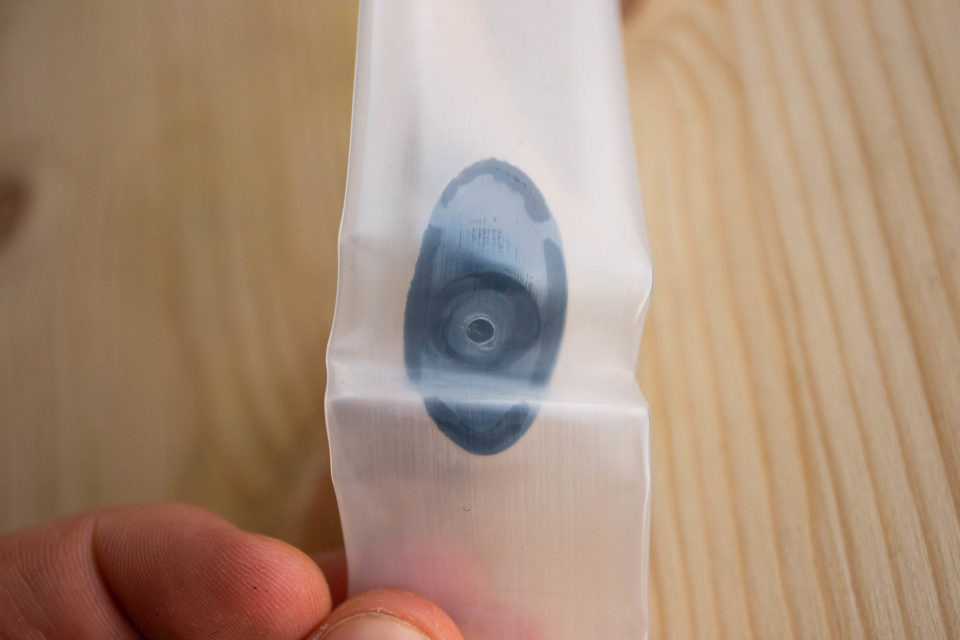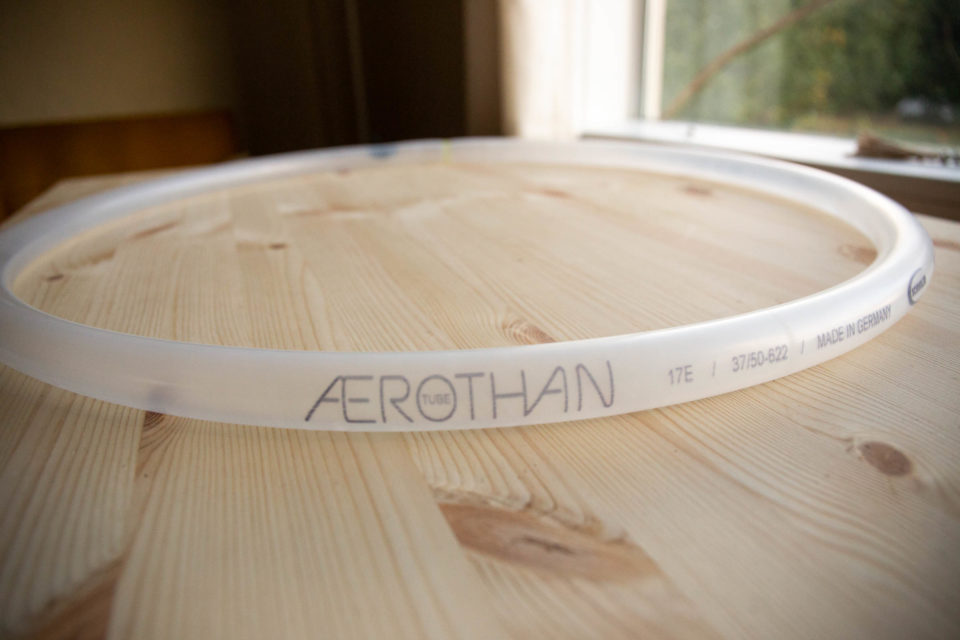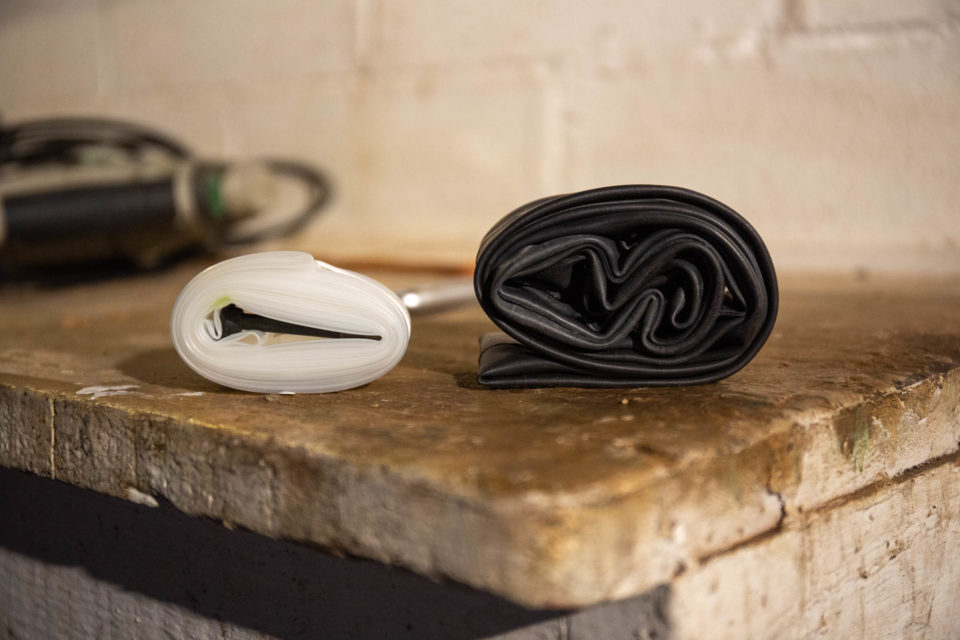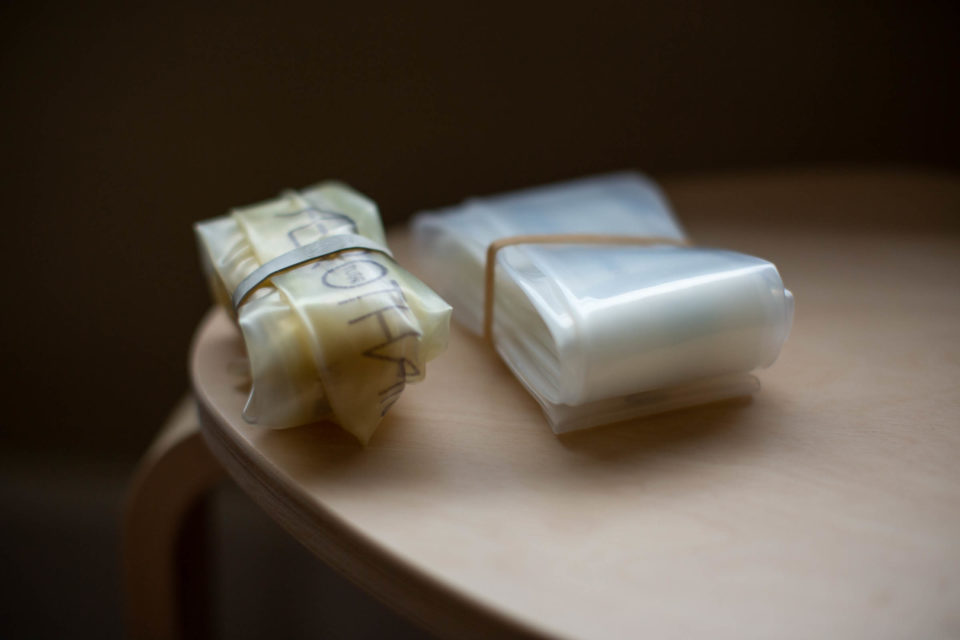Schwalbe Aerothan Tubes Review
Announced earlier this fall, Schwalbe’s ultralight Aerothan Tubes are extremely packable, weigh about half as much as a standard tube, and are claimed to offer great puncture resistance. But are they worth the high price tag? We had a few sent over to find out…
PUBLISHED Dec 21, 2020
A major drawback of running big tires and tubes is the weight that comes with them. Of course, running a proper tubeless setup can help mitigate some of that, and is certainly our recommendation for bikepacking—but you should still carry a spare tube just in case. For a last resort item like a tube, it seems a bit crazy to lug one around when some of the larger plus-sized options weigh over a pound and aren’t small by any means. Although there are other ultralight tube options out there, the latest traditional tube alternative to join the ranks is Schwalbe’s Aerothan Tube, and the brand is making some big claims about them.
The Schwalbe Aerothan Tubes are made from a thermoplastic polyurethane (TPU), including the valve, and weigh 65% less than a comparable butyl rubber tube. What makes them unique is their puncture, heat, and pinch resistance, and a ride feel that has been compared to a true tubeless setup. I’ve been running a pair of their 700c Allround tubes (and carrying a 27.5+ tube as a spare) for the last few weeks to see how they feel.
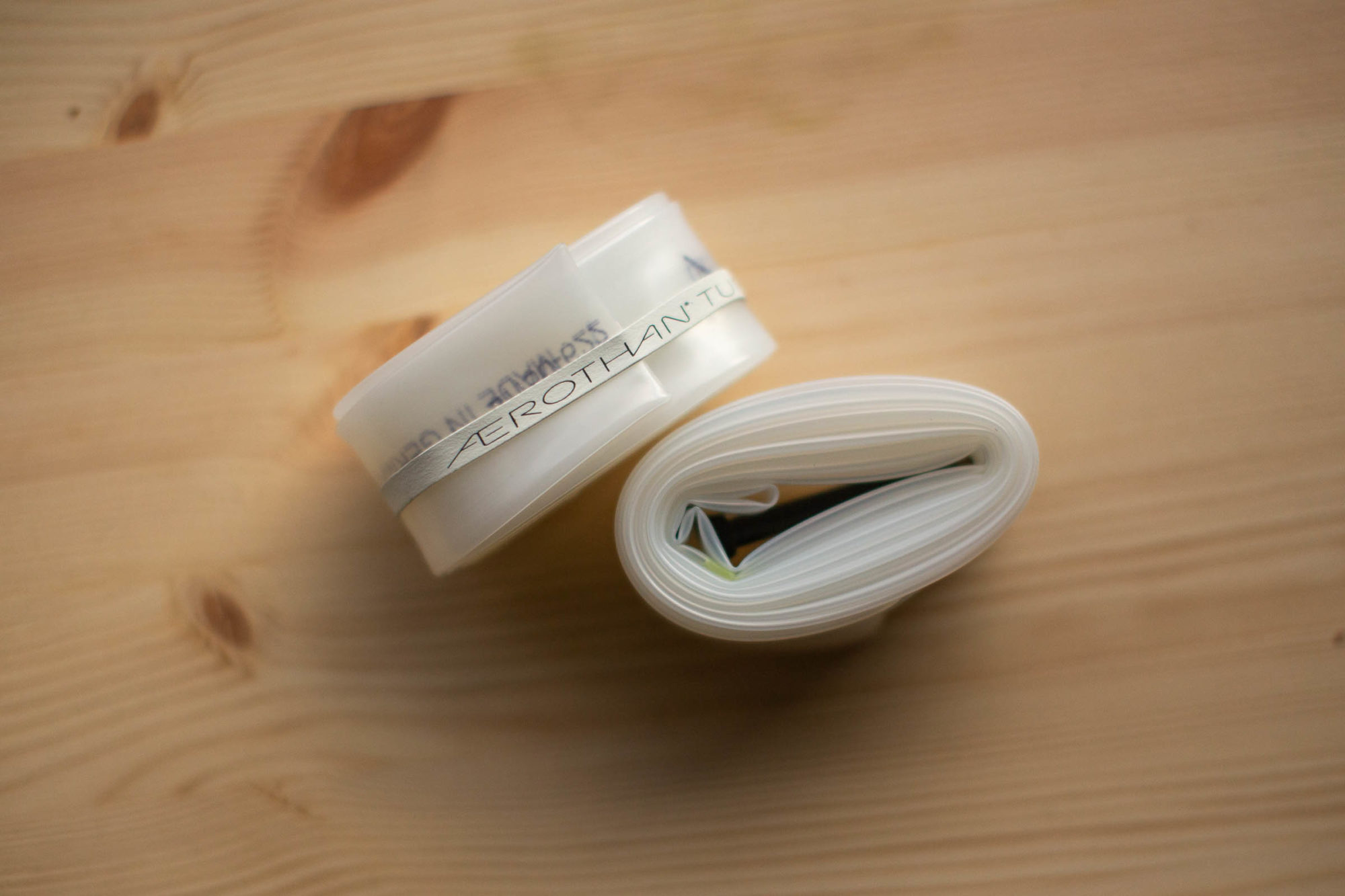
First Impressions
The Aerothan tubes are impressively lightweight, and their semi-transparent, undied finish looks particularly futuristic. The TPU construction is quite slick, not grippy like standard rubber tubes, and doesn’t feel fragile to the touch. Both the 700c Allround and 27.5+ tubes pack down impressively small, disappearing in the bottom of a frame bag while bikepacking or easily tucked into a hip pack while out for the day. They ship in a small paper box with a little rubber band to keep the tube from unraveling.
On my scale, the 700c Allround tubes weighed in at 65g, compared to an equal butyl rubber tube (700 x 45-50mm) at 147g. The 27.5+ Aerothan tube weighed an impressive 116g, compared to a Maxxis 27.5+ tube at 343g. They definitely live up to Schwalbe’s weight claims and are on par with Tubolito’s large line of ultralight tubes. Like the Tubolitos, the Aerothan tubes pack down to slightly larger than 1/3 the size of an equivalent rubber tube and have the ability to be compressed a little further with a small strap or tape.
I swapped the standard 29″ butyl tubes out for the Aerothan 700c Allround tubes on a bike I’m currently testing. Installation is as simple as installing a regular tube, even a little easier, since the slippery surface of the tube quickly pops into place on the rim when partially inflated. The valve isn’t threaded and is made of TPU, so there’s no need to keep track of the small circular nuts that I always seem to lose. Interestingly, the Aerothan tubes come with removable valve cores—which might be for easier packing, since they are not compatible with tubeless sealant. Note that this eliminates the option of adding sealant to make your own “slime tube,” a common practice before the age of tubeless tires.

Performance
What had me most interested in the Aerothan tubes were Schwalbe’s claims that they offered a “tubeless-like” feel and due to their exceptional durability, allow you to run lower pressures than a standard butyl tube. During my first big gravel ride with the 700c Allround Aerothan tubes installed in 700 x 50mm Maxxis Ramblers, I ran what I consider pretty standard gravel pressure. Right around 30 PSI in the front and 35 PSI in the back, and had no issues at all. They rode as expected and since it was a higher pressure, I wasn’t able to discern any differences between them and a standard butyl tube.
Next, I headed out to a local trail system that is most frequented by Tacomas loaded with full-suspension mountain bikes. Mount Mahoney in Powell River is where you go if you’re looking for a big climb, and fast descent—veering into the enduro / downhill side of things for those going all out. Thankfully, there is one flow trail that I figured would make a good testing ground for lower pressures. I dropped both tires full 10 PSI lower: 20 in the front and 25 in the back. Although I was nervous at first, and half expected a pinch flat right away, they performed quite well. When dropped into lower pressures, the Aerothan tubes feel somewhere right between a true tubeless setup and a standard butyl tubed tire. The lightweight, pliable tube allows for lots of tire movement, which helped me maintain traction on some steeper descents but it still felt slightly bouncier, for lack of a better word, than a tubeless setup.

I was actually quite impressed with the Aerothan tubes, right up until I decided to fly down a super chunky section of logging road littered with fist-sized rocks. This is where I found their breaking point and compressed my tire enough to squish the Aerothan against my rim, resulting in a pinch flat. Mind you, I was riding the bike, tires, and tubes what I consider to be way outside of their intended use. I secretly hoped I would be able to pinch flat the Aerothan tubes, and I did. Later that night I got out some Park Tool glueless patches and fixed it up right away, it’s been over a week now and they are holding just fine. Schwalbe recommends using their own patches, but it’s nice to know that the Park Tool variety work fine as well.
I’ll also add that the punctures didn’t expand or split on the tube, which is common for standard butyl tubes, which seems to be attributed to their overall durability. I even took a pair of scissors to the Aerothan tubes and found them to provide more resistance than a normal tube. After a few weeks of riding, the Aerothan tubes feel the same as a new one but are now stained yellow from their time in the tire. I suppose that’s nothing to worry about, though. The only complaint I have is the unthreaded valve, which makes pumps without locking heads difficult to use, since the TPU valve is slick and offers no friction.

It’s worth mentioning that I have heard of others having difficulty patching the tubes when using Schwalbe’s glueless patches, but that was not my experience. One of our readers also managed to break a valve, right where the rim meets the valve stem, which isn’t great to see. I’m not totally surprised by this though, and strongly believe my titanium Terkse valve stems paired with a good tubeless setup is a much more reliable setup—especially for bikepacking.
See all of the current Aerothan options below:
Schwalbe Aerothan Tubes
| Product | Wheel Size | Tube Size | Weight | Price |
|---|---|---|---|---|
| 26″ MTB | 26″ | 54/62-559 | 81g | €27.90 |
| 27.5″ MTB | 27.5″ | 54/62-584 | 83g | €27.90 |
| 27.5″ MTB+ | 27.5″ | 62/75-584 | 109g | €27.90 |
| 700c Race | 700c | 23/28-622 | 41g | €27.90 |
| 700c Race Endurance | 700c | 28/35-622 | 50g | €29.90 |
| 700c Allround | 700c | 37/50-622 | 61g | €27.90 |
| 29″ MTB | 29″ | 54/62-622 | 87g | €27.90 |
| 29″ MTB+ | 29″ | 54/62-622 | 116g | €29.90 |
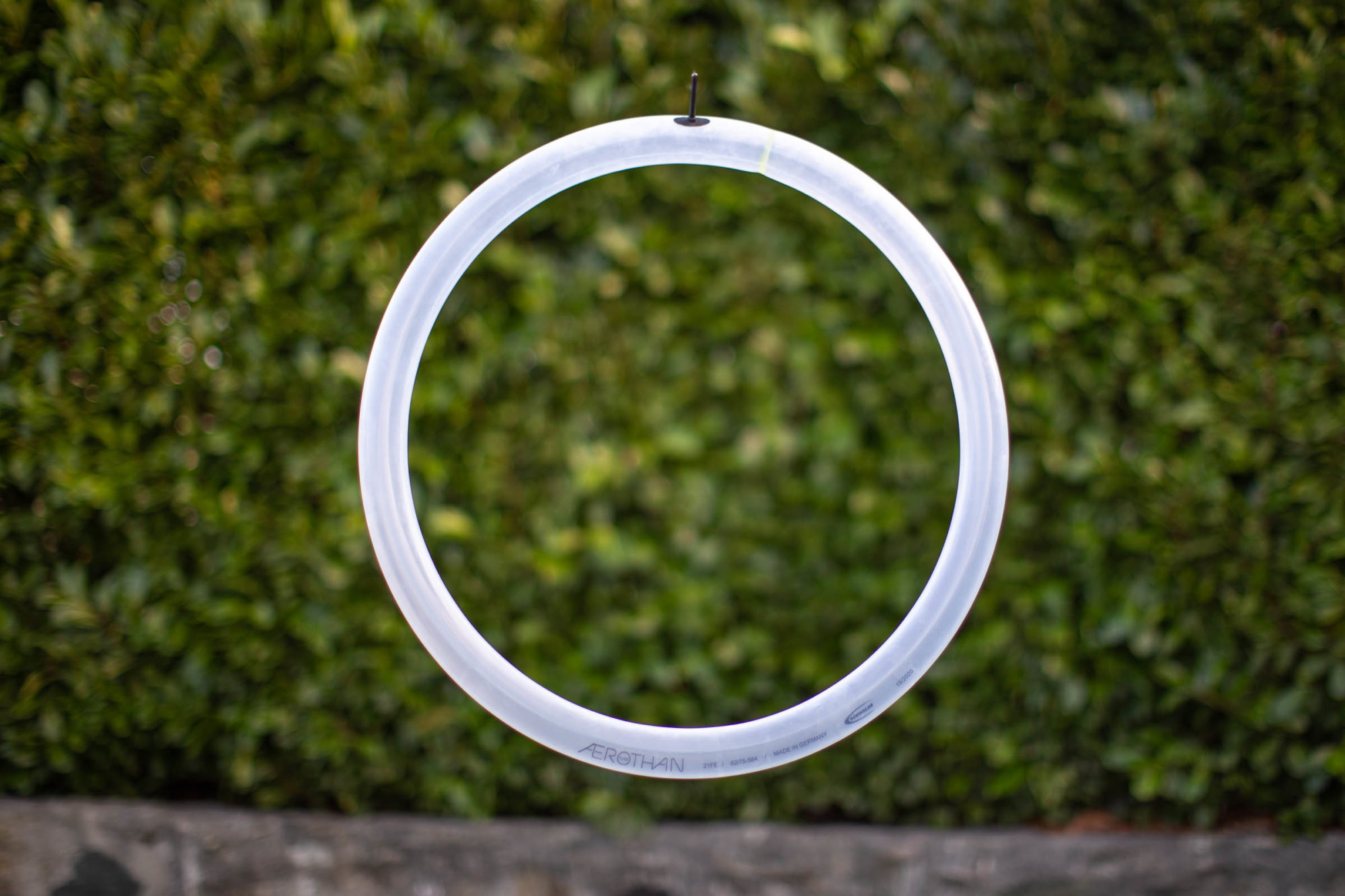
Pros
- Lightweight and packable
- Easier to recycle than butyl tubes
- Great ride feel
Cons
- Expensive
- Not a tubeless replacement
- Potential durability issues with the valve
- Threadless valves can be tricky to pump
- Model Tested: 700c Allround
- Material: TPU
- Weight: 65 grams
- Place of Manufacture: Germany
- Price: €27.90 ($34 USD)
- Manufacturer’s Details: Schwalbe.com
Wrap Up
At just over $30 per tube, these things certainly aren’t cheap. But they are incredibly light and packable, which is nice for those of us who are running larger than average tires or just want our bags to be as light and tight as possible. Although I eventually punctured the tube, I was quite impressed with their overall performance and think Schwalbe did a good job with the redesign. They don’t seem to seep air like a regular butyl tube, I’ve successfully patched several holes with a glueless patch kit. And, if you’re careful, you can get away with running low tire pressures.
Are Aerothan tubes a replacement for a proper tubeless setup? No way. Would I pack one as a spare, knowing that I’d get my tubeless fixed in the next town? Definitely.
Please keep the conversation civil, constructive, and inclusive, or your comment will be removed.

We're independent
and member-supported.
Join the Bikepacking Collective to make our work possible:







